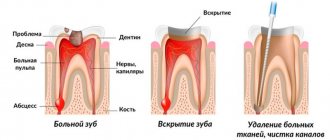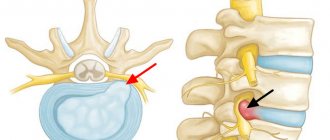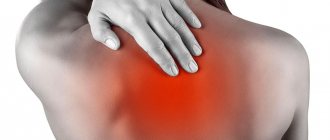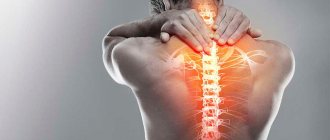Many factors can contribute to the occurrence of headaches in women, including heredity and age. There is a proven connection between headaches and hormonal changes.
The hormones estrogen and progesterone play a key role in regulating the menstrual cycle and pregnancy. They may also interfere with the chemicals that cause headaches. So a stable level of estrogen reduces pain, but with a decrease in its concentration, the pain intensifies.
Headache during the menstrual cycle
The content of the article
A decrease in estrogen just before menstruation leads to migraines. Therefore, many women have headaches before or during menstruation. In this case, the general condition is aggravated by unpleasant sensations in the stomach, dizziness, nausea, and emotional outbursts.
This condition requires treatment by a gynecologist-endocrinologist, since hormonal problems are dangerous and have other consequences. If you ignore the symptoms of hormonal imbalance, you can get early menopause, metabolic disorders with obesity, irregular periods, infertility and other problems.
Symptoms
Manifestations of cephalgic syndrome include:
- prolonged throbbing pain with clear localization in one area of the head;
- photophobia;
- painful reaction to loud sounds and strong smells;
- changes in blood pressure (both arterial and venous);
- blurred vision;
- feeling of “pressure” on the eyes;
- sleep disorders (insomnia);
- increased fatigue;
- decreased mental and physical performance;
- sudden mood changes;
- irritability and short temper;
- decreased ability to perceive information.
Please note: Immediately during menstruation, nausea and vomiting may occur, as well as pain in the lower abdomen, back and lumbar region. There is soreness in the mammary glands. Sometimes patients complain of heaviness and pain in the chest.
How to help yourself with menstrual migraines
The following methods are effective for treating menstrual migraine:
- Cold compress.
Apply a cold cloth or ice pack to the painful area on your head or neck. - Relaxation exercises and acupuncture.
Acupuncture, like relaxation exercises, stimulates various systems in the body and helps reduce headaches and stress. Exercise improves blood circulation and, among other things, increases lung capacity. Aerobic exercise is recommended for women with migraines as a way to counteract the cause of the symptoms. - Over-the-counter pain relievers.
The gynecologist will recommend taking non-steroidal anti-inflammatory drugs: naproxen sodium or ibuprofen. - Triptans.
Your doctor may prescribe triptans. These medications block pain signals in the brain. Triptans often relieve headaches within two hours and help control vomiting. - Nonsteroidal anti-inflammatory drugs (NSAIDs) with triptans.
Some patients are prescribed combinations of NSAIDs and triptans. These medications also relieve the pain of menstrual migraines. - Other prescription pain medications.
Dihydroergotamine is sometimes prescribed. It is not recommended to be taken in combination with triptans.
These methods do not normalize hormonal levels, but temporarily relieve symptoms. Therefore, without real hormonal treatment, a woman will have headaches every month.
Pain and endometriosis
and endometriosis According to the International Association of Study of Pain (IaSP, 2011), chronic pain is an independent disease manifested by constant pain in the lower abdomen and lower back, lasting more than 6 months. According to the International
Pelvic Society pain (International Pelvic Pain Society), chronic pelvic pain is recorded in approximately 15% of women of reproductive age, in 20% of all who undergo laparoscopy for pelvic pain. However, many patients with minor pain, as a rule, do not consult a doctor or remain without an established diagnosis.
Chronic pelvic pain accounts for approximately 10% of all visits to a gynecologist, 40% of laparoscopies performed, and 15% of hysterectomies. The body’s adaptation to chronic pelvic pain in endometriosis is associated with changes in the personal sphere, social maladaptation and a natural deterioration in the quality of life, which for most patients is more significant than purely physical suffering. Constant discomfort, hopelessness and excessive attention to pain contribute to the fact that the disease becomes dominant in the lives of these patients. The inability to solve ordinary family, professional and leisure-related issues ultimately leads to the formation of so-called pain behavior, up to social maladjustment.
Endometriosis, the most common cause of chronic pelvic pain, affects approximately 10% of women of reproductive age and 50–60% of women and adolescent girls with pelvic pain, spanning the period from menarche to perimenopause. According to statistics, 176 million women aged 15 to 49 years suffer from endometriosis. According to epidemiological studies, approximately a quarter of women with chronic pelvic pain are diagnosed with laparoscopically confirmed endometriosis. An analysis of the frequency of gynecological symptoms associated with pain, in which women were diagnosed with endometriosis during surgery, indicated that only 10.7% of patients out of 1000 examined did not indicate a history of pain in the lower abdomen and lumbar region. It has been established that the intensity of pain in endometriosis may not correspond to the severity of the disease. Such a discrepancy between its morphological prevalence and subjective perception of pain indicates that the pathogenesis and clinical manifestations of chronic pain in such patients largely depend on their psychological characteristics and perception threshold. Unsatisfactory results of treatment of patients with endometriosis can be manifested by the development of chronic pain syndrome, the frequency of which ranges from 5 to 50% or more. At the same time, the need to perform repeated operations in case of relapses of severe endometriosis, expansion of the scope of surgical intervention aggravate the syndrome of chronic pelvic pain.
Analysis of the patient's complaints and a traditional gynecological examination can only suggest the presence of endometriosis. Patients with endometriosis and chronic pelvic pain usually complain of constant and periodic, aching or paroxysmal, prolonged pain, usually limited to the pelvic area, lower back, and anterior abdominal wall below the navel. The pain usually peaks around menstruation and subsides after it. The pain is due to the fact that cyclic disorders occur in the foci of endometriosis, similar to those occurring in the endometrium, as well as concomitant inflammatory disorders, changes in nerve endings and adhesions, which often involve the lower intestines. With a long course of the disease, the pain loses its frequency, acquiring the character of a chronic pain syndrome. Pain is also possible during defecation (if the rectum is damaged or is involved in the adhesive process) and urination (if the bladder is damaged). Some patients experience discomfort and pain during sexual intercourse (dyspareunia). As a rule, this symptom occurs in patients with damage to the uterosacral ligaments, rectovaginal septum, rectovaginal space and vagina. Some patients report moderate pain, while others complain of fairly intense pain that interferes with their usual daily activities, anxiety and depression, and sleep disturbances. In addition, the following clinical signs are characteristic of chronic pelvic pain in endometriosis:
- constant and constantly cyclical nature of pain for at least 6 months;
- the degree of tissue damage suspected during examination or detected during surgery is disproportionate to the pain;
- incomplete resolution of pain as a result of previous treatment due to a true placebo effect or tachyphylaxis (rapidly progressive decrease in therapeutic effect when drug therapy is re-administered);
- narrowing of the sphere of interests of the individual, physical, labor and social activity, physical and mental exhaustion, social maladaptation, concentration of attention only on pain;
- decreased sexual function and loss of interest in sexual relationships up to complete abandonment;
- changes in family relationships;
- disability, loss of ability to work.
Taking into account the difficulties of objectifying the diagnosis of pain, due to the subjective nature of its perception, and due to the difference in the threshold of pain sensitivity, patients should be recommended to keep a menstrual calendar for 1–2 cycles, marking the days on which pain was felt, taking into account the increase in its intensity:
- weak (1);
- causing concern (2);
- causing suffering (3);
- very strong (4) and painful;
- unbearable (5).
This will allow not only to quantify pain symptoms, but also to identify a possible relationship with the menstrual cycle.
An objective examination can reveal tumor-like formations in the area of the uterine appendages (endometrioid cysts), enlargement of the uterus and limitation of its mobility (internal endometriosis, adenomyosis), compaction or mass formation in the retrocervical area (endometriosis of the rectovaginal septum), pain on palpation of the pelvic walls and uterosacral ligaments, indicating possible peritoneal endometriosis.
When examining or colposcopy of the vaginal part of the cervix and vagina, it is not difficult to detect endometriotic lesions. To clarify the diagnosis, ultrasound, magnetic resonance or computed tomography are used, fairly accurate (but not absolute) methods for diagnosing endometrioid ovarian cysts, endometriosis of the rectovaginal area, and adenomyosis. However, none of these methods allows diagnosing foci of endometriosis in the pelvic peritoneum.
Due to the lack of a reliable non-invasive/minimally invasive test due to the lack of sensitivity and specificity of currently available methods, the time interval between the first appearance of pain symptoms and the diagnosis of endometriosis increases to 7 years.
The delay in establishing an objective diagnosis of endometriosis when patients visit non-specialized medical institutions averages 6.7 years (from 5.5 to 8.3 years), which correlates with an increase in the number of pain symptoms (chronic pelvic pain, menstrual irregularities, pain during sexual intercourse) and uterine bleeding. The final diagnosis of external endometriosis can be established only on the basis of data obtained from direct visual examination of the lesions, confirmed by the results of histological examination. In this connection, and for early determination of the cause of chronic pelvic pain, it is advisable to conduct diagnostic laparoscopy.
Laparoscopy may reveal foci of endometriosis on the peritoneum of the pelvic cavity and ovaries, endometrioid ovarian cysts (endometriomas), endometriosis of the rectovaginal space, sometimes spreading to the walls of the rectum or sigmoid colon, endometriosis of the bladder and appendix, and adhesions. Laparoscopy makes it possible to identify signs characteristic of internal endometriosis: “marble” pattern and pallor of the outer cover of the uterus, a uniform increase in its size in the diffuse form, significant thickening of the anterior or posterior wall of the uterus, deformation of the uterine wall by adenomyosis nodes in focal and nodular forms.
Treatment in the presence of pain symptoms presumably caused by endometriosis or a laparoscopically confirmed disease includes analgesic and hormonal therapy, as well as, if necessary, correction of autonomic and anxiety-depressive disorders.
Empirical, i.e., carried out without confirmation of the diagnosis by the results of visual observation and histological examination, therapy for chronic pelvic pain, presumably caused by endometriosis, can be undertaken only after a thorough examination of the patient and the exclusion of other, non-gynecological, causes of the observed symptoms and only by a doctor qualified extensive experience in the treatment of this disease, subject to the exclusion of space-occupying formations in the abdominal cavity (endometrioid cysts, retrocervical endometriosis).
Drug treatment of endometrioid ovarian cysts without verification of the diagnosis is unacceptable, since the supposed “endometrioid cyst” may actually be an ovarian tumor or “transform” into one during conservative therapy. Ultrasound findings of internal endometriosis (adenomyosis) in the absence of clinical symptoms are not an indication for hormonal therapy. Carrying out hormonal therapy in the preoperative period is not justified, since as a result of such exposure during surgery, it is difficult to identify the true boundaries of the lesion and peel out the sclerotic capsule of the endometrioid cyst, and small foci of endometriosis are masked. Although preoperative hormonal therapy reduces symptoms of endometriosis, there is insufficient evidence to support its use in pain relief compared with surgery without prior hormonal therapy. Drug monotherapy for pain and other symptoms of endometriosis is possible and advisable in the following situations:
- adenomyosis (internal endometriosis), accompanied by corresponding symptoms (heavy menstruation or other menstrual irregularities, pain);
- suspected superficial peritoneal endometriosis;
- deep infiltrative endometriosis, confirmed by the results of biopsy and histological examination;
- in patients in whom radical removal of foci of endometriosis was not performed in the interests of preserving reproductive potential or due to the danger of injury to vital organs or the lack of appropriate erudition of the operating surgeon;
- persistence or relapse of symptoms after surgery (especially for deep infiltrative endometriosis), in this case drug therapy may be a real alternative to reoperation;
- the patient’s refusal to undergo surgical treatment or the presence of contraindications to it;
- as the first stage of treatment of endometriosis of the so-called non-reproductive organs (after a biopsy or exclusion of the tumor): bladder, numerous lesions on the intestines, diaphragm, bronchi, lungs, larynx, eyes, etc.
The hormonal drugs studied (danazol, progesterone drugs, combined oral contraceptives and GnR-agonists) have comparable effectiveness, but their side effects and costs are different. Some side effects limit the long-term use of these drugs and often lead to non-compliance. Some patients avoid hormonal therapy and successfully manage their symptoms with painkillers. Although nonsteroidal anti-inflammatory drugs (NSAIDs) may be effective in treating pain associated with endometriosis, there are insufficient randomized controlled trials to evaluate their effectiveness.
In addition, it should be remembered that analgesic therapy for endometriosis should be systemic and should be carried out over 3-6 months, and not episodically, in courses of 5-7 days (including days of highest pain intensity).
Hormone therapy should be started with progestins (orally, intramuscularly or subcutaneously) or combined oral contraceptives for both pelvic pain suspected of being caused by endometriosis and pain symptoms that have returned after surgical treatment.
Thus, a comparison of the effectiveness against pelvic pain of dienogest (at a dose of 2 mg 1 time per day) and the GnRH agonist leuprolide acetate (3.75 mg intramuscularly every 4 weeks) lasting 24 weeks, which included a woman with laparoscopically confirmed endometriosis, showed a stable and similar reduction in the severity of pelvic pain. The levonorgestrel-containing intrauterine system Mirena has been found to reduce pain associated with endometriosis and heavy menstruation. All of the drugs listed above can be taken long-term, while use of GnRH is limited to 6–12 months. The data obtained indicate that the use of Mirena leads to a reduction in pain associated with endometriosis, and symptom control is maintained for more than 3 years. AGn-RH should be prescribed in cases where progestins or COCs are not effective enough in the treatment of endometriosis, and it is advisable to limit the duration of use of drugs of this class to 3-6 months due to a possible decrease in bone mineral density up to 6% in the first 6 months, not in all cases, completely reversible, the prevention of which requires “cover-up therapy” with calcium preparations, especially since the results of one RCT revealed similar effectiveness in relieving pain of 3- and 6-month courses of therapy with GnRH and combined oral contraceptives.
However, GnRH agonists should be used with caution when treating women with low bone mineral density. In addition to medical conservative treatment, surgical treatment of pain associated with endometriosis is possible. The goals of organ-conserving surgical treatment are to restore normal anatomy, destroy the endometriotic substrate, and eliminate pain. This approach is used in the treatment of women of reproductive age who want to preserve fertility and avoid early menopause.
The surgical approach should include removal of ovarian endometriomas and endometriosis infiltrates, including in neighboring organs (intestines, bladder, ureters, appendix, etc.), separation of adhesions and destruction of nerve structures that provide pain impulses.
Radical surgical treatment involves removal of the uterus with bilateral removal of the appendages and all visible endometrioid lesions, with the possible addition of denervation interventions. In some cases, these operations are associated with a high surgical risk, therefore they must be agreed with the patients and in all cases performed by an experienced surgeon in a specialized medical institution.
The use of a high-frequency myostimulator, acupuncture, vitamin B1 and magnesium preparations helps reduce the severity of dysmenorrhea. It has also been found that vitamin E can improve primary dysmenorrhea and reduce blood loss during menstruation, but it is unknown whether these drugs are truly effective for dysmenorrhea associated with endometriosis.
Many women with endometriosis find that nutritional therapy combined with homeopathy, reflexology, traditional Chinese medicine or herbal medicine actually reduces the severity of pain symptoms. Their use is possible in the absence of contraindications and the exclusion of cancer.
There is evidence of the therapeutic effect of botulinum toxin for pain in the perineum and dyspareunia. Currently, there is insufficient specific information about the effectiveness of various drugs in the medical treatment of chronic pelvic pain. Its occurrence is based on the same mechanisms as the basis for the appearance of neuropathic pain, so the following are general methods of treating chronic pain according to the level of available evidence.
The method and extent of surgical intervention for endometriosis depend, first of all, on the degree of spread of the process and damage to adjacent organs, as well as on the disruption of their functions. Reproductive plans and forecasts play an important role. Taking this into account, the scope of surgical intervention may be limited to the division of adhesions between organs to restore normal pelvic anatomy, coagulation of foci of endometriosis and additional measures to increase the possibility (frequency) of pregnancy in the natural cycle or as preparation for assisted reproductive technologies. In case of dysfunction of adjacent organs, in the presence of extensive infiltrative formations in the pelvis, which can also cause severe pain that cannot be relieved with conservative therapy, radical surgery is indicated with or without preserving reproductive function. The radical scope of surgical intervention without preserving reproductive function includes removal of the uterus and appendages.
In order to preserve reproductive function, when performing radical surgery, all endometrioid infiltrates in the pelvis and abdominal cavity are removed, but the uterus is necessarily preserved, even if it is necessary to remove the appendages, which allows for the subsequent use of assisted reproductive technologies in patients with endometriosis.
If only the anterior wall of the rectum is involved in the infiltration (without involving the mucosa), its excision using the “shaving” method or segmental resection of 1/3 or 1/2 of the intestinal lumen in case of complete damage is indicated. In this case, it is necessary to ensure the tightness of the sutures and the thoroughness of peritonization of the endometriosis excision site. Performing an anterior resection of the rectum with the application of a circular compression anastomosis is indicated only for stenotic lesions, and a coloproctologist should be included in the operating team. Resection of the endometrioid infiltrate of the bladder must be carried out within healthy tissues with restoration of the integrity of the organ with a double-row suture and long-term drainage of the bladder with a permanent catheter.
If the ureter is involved in the process and urodynamic disorders develop, it is possible to perform ureterolysis with or without resection of a section of the ureter with the imposition of an anastomosis according to the “end to end” principle, or the creation of a cystoureteroanastomosis. The urologist takes part in deciding the volume of the operation and performing the surgical intervention. In patients with chronic pelvic pain and endometriosis, damage to the appendix by endometriosis, which may also have chronic inflammatory or other changes, may play a role.
During laparoscopy, the appendix should be isolated (if possible) and examined. Laparoscopic removal of the appendix should only be performed if there are obvious changes. However, it is necessary to take into account the patient’s consent, as well as the risk of complications during the operation and in the postoperative period. Correcting the position of the uterus and moving it out of retroflexion in women with dyspareunia is advisable in some cases. However, there is no convincing evidence to support the effectiveness or clinical utility of this procedure.
The choice of method of surgical treatment and access (laparoscopic or abdominal) is determined by the experience of the surgeon and the specialty of the institution. To preserve reproductive function, laparoscopic access is optimal, however, in case of extensive infiltrative lesions with resection of adjacent organs, abdominal access (laparotomy) should be considered safer for most surgeons.
Preventative treatment
If debilitating headaches occur several times a month, your doctor will prescribe preventative treatment with nonsteroidal anti-inflammatory drugs or triptans. If you have a regular menstrual cycle, you need to take preventative medications for headaches a few days before your menstruation.
To prevent menstrual migraines, you need to reduce your salt intake a few days before the start of your cycle or take diuretics. If other means are ineffective, Lupron is prescribed, a drug that affects hormone levels. But treatment of menstrual migraine requires an accurate diagnosis of the cause, otherwise the hormonal balance will suffer even more. If your periods are irregular and the headache is present throughout the entire menstrual cycle, the doctor will prescribe preventive medications that need to be taken every day. This group includes beta blockers, anticonvulsants, calcium channel blockers, antidepressants, or magnesium.
Lifestyle changes: reducing stress, diet and regular exercise can also help reduce the frequency, duration and severity of migraines.
Headache during pregnancy
Estrogen levels rise rapidly in early pregnancy and remain high throughout pregnancy. For this reason, the headache sometimes disappears, but more often, due to stress, the migraine increases even more.
If your migraine is chronic, you should talk to your doctor about medications and treatments that may help. You cannot take anything on your own. Many headache medications have harmful effects on the developing fetus. You should also take medications with caution while breastfeeding.
After childbirth, headaches may return. This is affected by a sharp decrease in estrogen levels, irregular diet and lack of sleep.
Headache during perimenopause and menopause
For many women who have had hormonal headaches, migraines may become more frequent and severe during perimenopause. This is because hormone levels rise and fall unevenly.
After menopause, if it is necessary to continue treatment with estrogen, it is recommended to take it every day in small dosages. Your gynecologist may recommend an estrogen patch. The patch provides a low, stable supply of the hormone, which is least likely to aggravate headaches.
If hormone replacement therapy worsens your headaches, you can reduce your estrogen dose, switch to a different form of the drug, or stop hormone replacement therapy. Some women are more sensitive to the effects of hormones. If headaches are interfering with daily activities, work, or personal life, you should seek help from a doctor.
The condition can be aggravated by various medications, intolerance or allergies to drugs, and failure to maintain water-salt balance. You need to drink clean water, avoid soda and foods that cause swelling, and not self-medicate.
ONLINE REGISTRATION at the DIANA clinic
You can sign up by calling the toll-free phone number 8-800-707-15-60 or filling out the contact form. In this case, we will contact you ourselves.
If you find an error, please select a piece of text and press Ctrl+Enter
Main reasons
Pregnancy
There can be many reasons for a missed period, but most often the delay occurs during pregnancy. So, if your period does not come, you should first take a pregnancy test (sold at any pharmacy). For the most accurate result, it is recommended to purchase 2-3 tests from different companies at once.
During pregnancy, a woman may experience mild nausea, sudden changes in mood, pain in the breast area and swelling. The absence of additional signs does not exclude pregnancy.
In addition to the test, you can take an analysis for the level of human chorionic gonadotropin hormone (hCG) in the body, which will give a more accurate answer.
If both examinations show no pregnancy, but menstruation still does not occur, it is necessary to contact a gynecologist as soon as possible to identify the exact cause.
Gynecological diseases
Ectopic pregnancy, polycystic ovary syndrome, tumor formations in the female genital area, inflammation in the pelvic area - all this can lead to disruption of the menstrual cycle.
Most of these diseases require emergency diagnosis and treatment, so do not hesitate to visit a gynecologist.
Powerful stress
The symptom of a missed period can be caused by serious emotional or physical stress, mental overload, and lack of rest.
Often, it is the failure of the menstrual cycle that causes overexertion. Thus, the woman’s body screams for help, and if it is not heard, other ailments may be added to the delay.
Climate change
Flying from a hot country to a cold one and vice versa, accompanied by a sharp change in sleep and wakefulness, often also entails a disruption of the menstrual cycle.
In most cases, the situation will normalize on its own over time.
Poor nutrition
The standard norm for a period delay of 5-7 days can also be a call from the body for help if the failure is caused by following a strict diet.
Many women who want to quickly lose extra pounds often forget about health in the pursuit of slimness. Any diet should be carried out under the supervision of a specialist. In addition, under no circumstances should you enter into a diet abruptly, since rapid entry causes stress for the body.
Therefore, it is important to balance your diet, preferably by consulting a professional nutritionist.
Hormonal changes in the body
A common reason for a delayed menstrual cycle is hormonal imbalance associated with the thyroid gland. This is especially true during puberty or the threshold of menopause.
The same applies to long-term use and then abrupt cessation of hormonal medications.
In this case, the gynecologist may recommend consultation with an endocrinologist.
Postpartum period
During pregnancy and for some time after childbirth, women experience an absence of menstruation.
One should not forget about the need for contraception after childbirth, since the absence of critical days does not mean the exclusion of unwanted pregnancy. The first ovulatory cycle, as a rule, begins unnoticed by a woman, and without proper protection she has a high chance of becoming pregnant.









